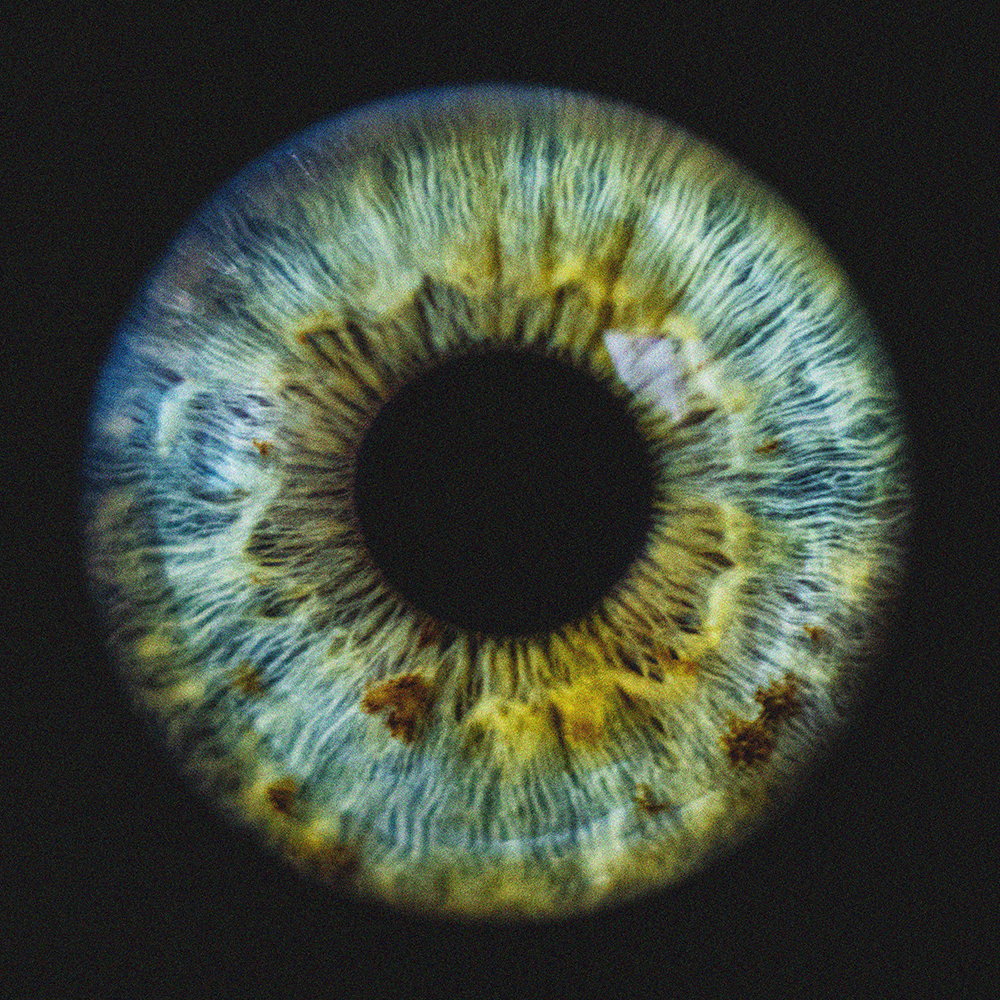By Sean Lawlor
Now that millions of dollars are being invested in psychedelics and platforms ranging from Fox News to Bloomberg are reporting positively on them, it’s safe to say that psychedelic therapy has entered the mainstream. But mainstream news tends to highlight catchy elements while glossing over other details, often resulting in an unbalanced portrait of the whole. For psychedelic therapy, you’re way more likely to hear about the “psychedelic” than the “therapy.”
No surprise there. Reports on people healing complex PTSD by taking the “party drug ecstasy” while wearing eyeshades and listening to music in a cozy office are more gripping than reports on the months of talk therapy that follow (ecstacy is not always MDMA, it sometimes contains other dangerous compounds). So, perhaps this article on the therapy side will not be as gripping as an Anderson Cooper 60 Minutes special, but I hope it will prove informative for anyone who desires to learn more about how psychedelic therapy is currently being practiced, and the complex elements beyond the administration of a substance that go into achieving the astounding improvements in depression, addiction, and PTSD that have now been so broadly reported.
The Importance of Staying Humble
I’ll kick this off by recognizing it is not possible to “capture” psychedelic therapy in any sentence or article or doctoral thesis. There are as many approaches and strategies as there are practitioners, and eliminating the potential for exploration and breakthrough through a prescriptive definition would be an insult to psychedelics themselves, which have exploded understandings of phenomena for centuries.
“There’s a lot of impression about what psychedelics are, how they should be treated, and what the optimal therapy is,” explains Dr. Matthew Johnson, Associate Director of the Center for Psychedelic & Consciousness Research at Johns Hopkins University. “We need to keep humble in terms of how much we don’t know, rather than fooling ourselves into thinking something is cemented in.”
While the future is ripe for exploration, there are several trends in approaching psychedelic therapy. So, this article is simply a glimpse into these trends, rather than a concrete definition of the whole.

Psychedelic-Assisted Psychotherapy
“Psychedelic therapy” is more accurately termed “psychedelic-assisted psychotherapy.” This distinction is critical, because the psychedelic is an adjunct to the therapeutic process, rather than a replacement for the process itself. So, when I refer to “psychedelic therapy,” I am simply abbreviating “psychedelic-assisted psychotherapy.” And there are far fewer psychedelics being used in therapy than there are psychedelics in general.
Psilocybin and MDMA are the two predominant substances currently being researched in psychedelic therapy, and each has been granted “Breakthrough Status” by the FDA in separate clinical trials, which basically means even the government recognizes how promising they are in therapy. Other substances used in psychedelic therapy are ketamine, a legal medicine throughout the U.S., and cannabis, which is still fully illegal in only eight states.
Interestingly enough, only one of these substances—psilocybin—is a classic psychedelic. The other three are all noted as having psychedelic properties, but ketamine is a dissociative anesthetic, MDMA is an entactogen, and no one can seem to agree on what cannabis is.
Other psychedelics, such as LSD, ibogaine, ayahuasca, and 5-MeO-DMT, are being researched, yet none appear close to becoming legal. However, research into LSD-assisted psychotherapy in the ‘50s and ‘60s, especially as spearheaded by Dr. Stanislav Grof, provided foundational elements for common frameworks implemented with other substances today. But LSD’s stigmatization remains heavy, and its unpredictable effects are particularly long-lasting, so it has not re-emerged to the forefront of psychedelic therapy. So, the “psychedelics” of psychedelic-assisted psychotherapy of interest in this article will be psilocybin, MDMA, ketamine, and cannabis.
A Framework of Preparation and Integration
Psychedelic therapy is not as simple as administering a substance and Voila! Depression defeated! The psychedelic sessions—interchangeably referred to as “medicine” or “dosing” sessions—take place in a broader framework of preparation and integration therapy, neither of which involves the administration of a substance.
The ratios of preparation/integration sessions to medicine sessions vary widely and depend on many factors, such as dose size and financial limitations. The most widely-documented framework currently being practiced comes from the Multidisciplinary Association for Psychedelic Studies (MAPS), the organization behind the FDA-approved trials for MDMA-assisted psychotherapy for the treatment of PTSD. MAPS’ MDMA therapy involves three 90-minute preparatory sessions, a first MDMA session, three integration sessions, a second MDMA session, three more integration sessions, a third MDMA session, and three final integration sessions. In total, that’s three medicine sessions, and twelve preparation/integration sessions, a cycle that lasts about five months.
That’s five times as many non-medicine sessions as medicine sessions. MAPS’ significant results—i.e. one year after their Phase 2 trials, 68% of participants no longer qualified for PTSD—cannot be separated from this full process. Sara Reed, who worked on MAPS’ Phase 2 trials and is now the Director of Psychedelic Services at the Behavioral Wellness Clinic in Connecticut explains, “The integration sessions are just as important as the dosing sessions, if not even more important.”

Johns Hopkins University’s research in psilocybin therapy also involves far more preparation and integration therapy than psychedelic sessions. Among the many focuses of their Center for Psychedelic & Consciousness Research, Johns Hopkins is researching psilocybin therapy for smoking cessation.
Johnson is the study’s Principal Investigator. Results from the study’s pilot phase, published in 2014, found that after 6 months, 80% of participants had remained abstinent from smoking, compared to the 30-35% success rate of predominant treatment models. In the study’s second iteration, which is ongoing at the time of this writing, Dr. Johnson reports that at the one-year follow-up, 59% of the psilocybin group were biologically confirmed as abstinent, compared to 27% of the group who used a nicotine patch.
While the pilot study involved three medicine sessions, the current study involves only one. Everything else is preparation and integration. “Right now, they have integration sessions for ten weeks after the psilocybin session,” Johnson explains. “These are hour-long, weekly check-ins. With preparation, we have about eight hours across four different sessions.”
Given that ketamine therapy is being widely practiced, and numerous other psychedelic therapy trials are underway, it would take many articles to detail all the protocols being used. The trend to note is that sober preparation and integration sessions are essential to psychedelic therapy, and even tend to involve far more time than the medicine sessions.
A Relational Approach to Therapy
I’m tempted to write a section on what preparation and integration therapy looks like, but this would be impossible. These terms are vague; there is no set way to do them, no script to follow. Yet amidst common components such as intention setting, dose determination, and discussions of the particular psychedelic’s effects, the glue that connects these sessions across countless frameworks is the essentiality of establishing a strong and trusting therapeutic relationship.
“More important than the therapist’s psychological orientation is the rapport with the participant,” Johnson explains. “If you actually care for this human being you’re dealing with, and you’re making a sincere effort, and they get that—that overrides whatever descriptors you use.”
A client-centered, relationship-based approach to therapy arose in the mid-20th century in response to the dominant paradigms of psychoanalysis and behaviorism. Back then, therapists were viewed as the “expert” in the room, interpreting and diagnosing clients while remaining emotionally detached. Carl Rogers then theorized that interpretation and theoretical expertise were not essential, or even necessarily helpful; the central element to a client’s healing was the quality of the therapeutic relationship, cultivated in a climate of genuineness, accurate empathy, and unconditional positive regard. This client-centered approach laid the foundation for humanistic psychology.
Whether or not one aligns entirely with Rogers’ framework and disposition, it is widely accepted in psychedelic therapy that the therapeutic relationship is paramount.
“When you’re getting into psychedelic work, there can be a subconscious pull toward skipping aspects of relationship building,” explains Rafael Lancelotta, who practices cannabis and ketamine therapy at Innate Path in Denver, CO. “That can really negatively affect the process. If you’re going to vulnerable places with someone you don’t trust, your system’s defenses are going to come up and prevent you from moving through a healing process.”
Therapy is already vulnerable; that vulnerability amplifies exponentially when a substance is involved. Imbibing a psychedelic, a client sacrifices control, accepting the heightened uncertainty of where the session may lead. If they do not trust the therapist, the lack of trust will likely manifest in the medicine session and impede the work.

An important element to a relational approach is respecting and understanding the identities clients hold. Sara Reed is part of several committees devoted to increasing access to psychedelic medicines for underserved populations, and she brings specific attention to the complexities of clients’ social identities.
“I approach ketamine therapy through an intersectional lens,” Reed explains. “I take into account a person’s age, race, sexual orientation, gender, geography, socioeconomic status, education, and what they’ve been exposed to in the world. I’m sensitive to the way they language their experience and the way they experience the world. From that lens, we create treatment plans specific to their symptom presentation and symptom severity to give them a tailored psychedelic psychotherapy experience.”
Reed does not position herself as the expert; she positions herself humbly in relation to the client’s experience, listening to their unique background and needs in order to develop a course of action. This humility, and the trust-building that comes through it, is the essence of a relational approach.
Given that psychedelics often attract people with spiritual and esoteric worldviews, therapists must be prepared and willing to enter and understand a client’s way of seeing. Michelle Anne Hobart specializes in preparation and integration therapy—which, by the way, is a legal therapeutic modality, so long as illegal medicines are not administered. Hobart is a specialist in “spiritual emergence,” which she describes as “a space of people expanding beyond the separate sense of self into a larger understanding of interconnection between other beings and the planet.” This inner awakening can occur through psychedelic experiences and potentially be destabilizing, and Hobart’s specialty allows her to meet her clients in their expansive worldviews.
“It can be helpful to check the astrology transits in preparation for journeys,” Hobart explains, referencing the Archetypal Astrology work of Stan Grof and Richard Tarnas. “It’s making correlations between the type of medicine experience that someone might be having with the overlay of archetypal dynamics at that time. It can be really empowering to know that certain tones might show up in the medicine journey.”
If an astrologically-minded seeker comes to a material scientist whose preparation cannot extend beyond images of entropic brain states and explanations of oxytocin, the amygdala, and the hippocampus, it probably will not be a good fit. A relational approach hinges on meeting clients where they are, and many psychonauts do not view the world through a strictly scientific lens.
Therapists cannot simply assume trust due to the position they hold. They have to earn it, and that process takes time and patience. If that process is not honored, numerous problems can result, including the potential for re-traumatization in the medicine session due to an unsafe container—an issue that Hobart rightly describes as a “shadow” of psychedelic therapy. Like therapy itself, preparation and integration are most effective when relational, adaptable, and responsive to clients’ individual needs. With a trusting relationship established, an “inner-directed” process can unfold.
Inner-Directed Therapy
Psychedelic therapists often maintain that the medicine helps incite an “inner-directed” healing process, where a client’s “innate healing intelligence” or “inner healer” can emerge from its walled-off container and catalyze the necessary internal movement.
“As a therapist, your therapeutic stance is to trust the process and not get ahead of the medicine, to follow the participant in their journey,” Reed explains. “In essence, you’re just really present with the medicine, the material, the client, and yourself, navigating that liminal space where transformation can happen.”
Again, the client is the expert, and the therapist skillfully cultivates space for a process to organically unfold. Stan Grof created the term “holotropic” for this process, which translates to “moving toward wholeness.” The therapeutic approaches then used in integration can come out of the client’s authentic holotropic experience, allowing for the integration to meet emergent needs rather than place an established framework onto a process.
Psychedelic therapists create trusting, comfortable conditions that allow the client’s inner healer to guide the medicine sessions, and all ensuing sessions by extension. What that clients’ inner healer brings forth depends on other measurable factors as well, such as the size of dose administered.
Psychedelic vs. Psycholytic Therapy
When folks are talking about psychedelic therapy, they are sometimes in fact talking about psycholytic therapy. “Psychedelic” therapy involves high-dose medicine sessions, in which the client may lose contact with the therapist, if not the physical world. “Psycholytic” therapy involves low-dose medicine sessions, in which perceptual doors are opened, but not obliterated completely.
Jason Sienknecht trains ketamine therapists through the Psychedelic Research and Training Institute (PRATI), an organization he helped found. In his therapeutic practice at the Wholeness Center in Fort Collins, CO, he facilitates both psychedelic and psycholytic ketamine therapy.
“In the psychedelic session, we use high-dose ketamine to induce a fully-dissociated psychedelic state,” Sienknecht explains. “They go in very deeply, and the ketamine and music helps them move toward insights about their life and give them clarity and perspective about their struggles.”
This high-dose, non-dialogue approach is used by Johns Hopkins with psilocybin in the smoking cessation study. “We use a high dose of 30 milligrams per 70 kilograms of body weight,” Johnson says. “That generally equates to about 5 dried grams of psilocybe cubensis. So, it’s the classic Terence McKenna ‘heroic dose.’”
In psychedelic sessions, dialogue with the therapist is kept to a minimum—sometimes by necessity, when clients temporarily lose the ability to speak. In psycholytic sessions, on the other hand, clients enter a “low-dose trance state” and stay engaged with the therapist.
“With psycholytic therapy, you don’t dissociate so much that you lose your capacity to sustain dialogue with a therapist,” Sienknecht explains. “You stay in contact the entire time. Some clients I work with really like that, as opposed to me saying, ‘Goodbye, I’ll see you on the other side,’ as we do with psychedelic sessions.”

Each approach has its uses. Some clinicians believe psychedelic sessions are necessary for clients to transgress their self-imposed limitations and open to a more expansive kind of healing. Psychedelic sessions can also be helpful for crisis situations. For example, some clinicians use high doses of ketamine for suicidal clients, as an ego-dissolving experience may be necessary to help the client “break out” of their all-consuming mentality.
Psycholytic sessions allow for conscious processing of emerging material through direct, intentional work with what arises. Further, these low-dose sessions allow clients to work directly with relational wounds by remaining in contact with the therapist through the non-ordinary state. Again, the significance of this relational element cannot be understated, especially as relationship-building extends beyond the need for trust in the session.
“I find it difficult to think of any form of mental illness that isn’t highly relational,” explains Lancelotta. “I think this work is for healing those core relational wounds.”
In this understanding, the relationship with the therapist is the relationship through which deep relational wounds can be healed. These “core relational wounds” affect people far more than they often realize, playing into numerous mental conditions and existential struggles that cannot be healed in isolation.
Whether a client’s healing will come best through psychedelic or psycholytic therapy—or a hybridization of the two, as Lancelotta envisions—depends on numerous factors, to which therapists must remain sensitive and attuned. A “more-medicine-is-better” mentality can be highly problematic and potentially destabilizing for an already unstable client. Regardless, medicine sessions cannot exist in a vacuum. Without preparation and integration to support the psychedelic experience, psychedelic therapy is no different than peer support, and while this can still be hugely impactful, it will undoubtedly diminish the potential for lasting transformation.
Bringing It Home
Psychedelic-assisted psychotherapy is an umbrella term that is far more complex than someone taking a drug in a calm and comfortable room. It is an extensive framework involving a significant amount of “regular” therapy that adapts to clients’ unique struggles and needs. As much as mainstream news may want to convince you otherwise, psychedelics are not the “magic pill” panacea that will quickly and easily make all your problems go away. Yet psychedelic experiences can bring profound insight and meaning, and a growing body of psychedelic therapists use tried and tested methods to enhance these substances’ transformative potential, so that a revelatory trip can truly change a person’s life.
About the Author
Sean Lawlor is a writer, certified personal trainer, and Masters student in Transpersonal Counseling at Naropa University, in pursuit of a career in psychedelic journalism, research, and therapy. His interest in consciousness and non-ordinary states owes great debt to Aldous Huxley, Ken Kesey, and Hunter S. Thompson, and his passion for film, literature, and dreaming draws endless inspiration from Carl Jung, David Lynch, and J.K. Rowling. For more information or to get in touch, head to seanplawlor.com, or connect on Instagram @seanplawlor.





